Age Friendly Homes
Independently ageing in place can be perceived as an unrealistic expectation for many elderly homeowners, with carer support or relocation to residential care often the repeated solution. However, healthcare professionals understand that with the right occupational therapy and home adaptations, clients can remain at home for longer with safety, relative independence and peace of mind. The demand to provide true age friendly homes is a growing challenge, so what is there to consider?
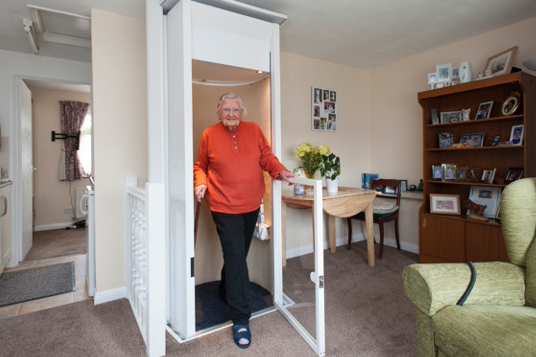
The care costs of inaccessible living
Chronic illness, injury and progressive conditions are known to hamper the ability to remain safely and independently within a non-adapted home setting. A well-documented rise in falls at home within the older age groups, caused by deteriorating muscle tone, stability and vision, equates to repeated hospital visits and high care costs for social and healthcare services.


Assisted living costs
The current pattern for elderly care within the UK has led to a rise in care home placements or a move to expensive assisted living settings. A client’s preference to remain in a familiar and much-loved home is often a secondary concern outweighed by perceived risks.
However, the cost to the private and public purse can be substantial, with residential care home averaging over £700* weekly and nursing care even more expensive. Subsequent deterioration in well-being can often arise due to loss of independence, morale, a sense of isolation and the process of relinquishing the family home
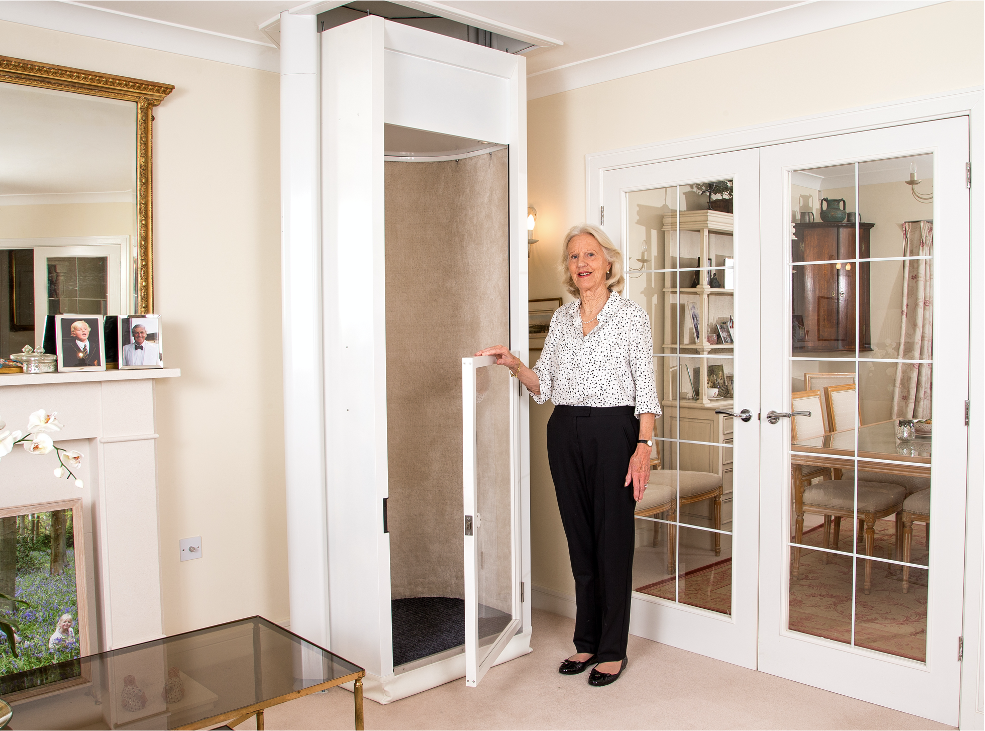
Proactive vs reactive
Proactive consideration of a client’s home layout and the provision of future-proof assistive equipment is key to establishing age-friendly homes – as opposed to reactive short-term solutions.
With this approach, care professionals can deliver a cost-effective route to long-term self-care within the home, providing condition management whilst reducing risks of future injury.
Choice and the path to age-friendly home renovation
Professional knowledge regarding advances in home adaptations can be used to reset traditional care paths, when a client’s health or mobility necessitates intervention. Evaluating and identifying the right holistic adaptations can transform ageing housing stock, and homes that were built for families and young adults, into age-friendly living spaces.
The mobility and rehabilitation marketplace now offers far more specialist solutions to optimise independence in the home. Products that may have been automatically selected in yesteryear have been surpassed by new and innovative designs. A modern Stiltz home lift, for instance, includes smart tech, fire seals and safety sensors, boasts a contemporary design and compact footprint, whilst being simply powered by a standard 13amp wall socket. Read more about Stiltz home lifts’ safety features here.
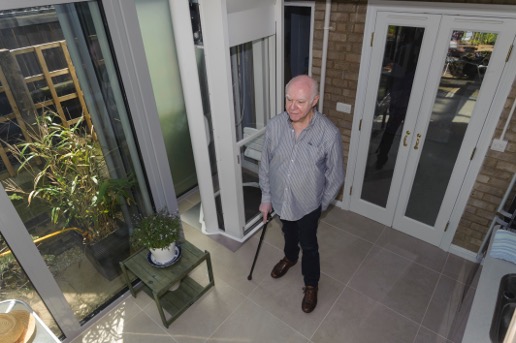
Occupational Therapists and home assessments
As part of a community and rehabilitation role, Occupational Therapists are encouraged to assess via a client-centred, holistic approach to care as well as assessing functional needs. By questioning preconceived care ideas, a successful independent living home provision can be achieved which ensures meaningful client activity.
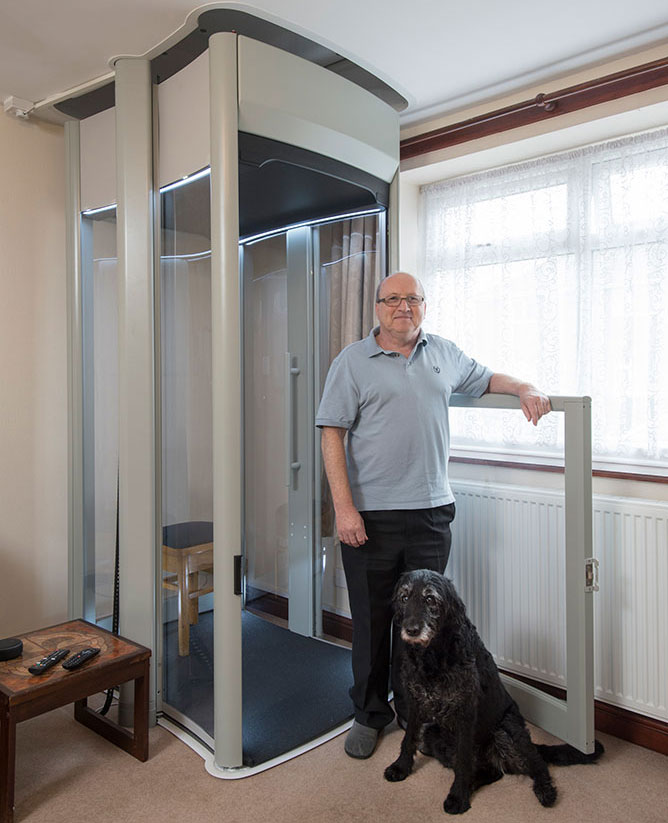
For instance, an older client returning home from hospital following a stair fall, may have traditionally been prescribed a stairlift. If the stairlift remained adequate for only a short period of time, due to transfer confidence, failing vision or declining mobility, the prescription might then have recommended sleeping downstairs to heighten safety. But if this creates a reduction in independent access to bathing and an upstairs bedroom, it also reduces meaningful occupation and well-being.
Client Centred Options
A more successful, client-centred option is now the installation of a through–floor home lift – a future proof decision allowing ageing well in place and negating the need for subsequent home alterations and costs. Following assessment, a Stiltz home lift can be installed quickly in a matter of days, so is a potential component for hospital discharge planning, reducing care costs and hospital readmission whilst delaying or negating future care facility admission.
Take a look at the following client-centred examples
Scenario A
Scenario B
Components for an Age-Friendly Home
- Step-free entrance into a property. (Or a small level change with good scope to ramp or slope over the change)
- Corridors and doors that are wide enough to allow for a wheelchair, walking frame, carer assistance or even a tea-trolley
- Convenient and safe access to upstairs levels for wheelchair users and individuals with reduced mobility on stairs
- Non-slip floors and surfaces
- Well-lit environment. (Eye-diseases and vision changes increase with age, including loss of peripheral vision. This can lead to stair edges and uneven surfaces becoming less obvious.)
- Lever-style handles instead of doorknobs
- Grab rails in bathroom and raised toilet height
- Multi-level kitchen worktops or bespoke height requirements
- Easy-access drawers and cabinets
- Halls and corridors that are free of clutter, such as, mobility equipment on each floor level.
Adaptation expenditure and justification
Investment in specialist products and home adaptations can support mobility and enhance moving and handling capabilities at a fraction of the cost of external care.
Domiciliary Care or Home Lift?
Domiciliary care is often suggested as a cost-effective alternative to residential care, yet the NHS advises that a live-in carer costs on average £650 a week and indeed this can be much higher. A domestic home lift costing £15,000 will have paid for itself in as little as six months compared to the average fees for a live-in carer or residential care home place.
Crucially, such home adaptations not only provide long-term support for functional limitations; they can also be preventative measures that safeguard future health. A Stiltz Home Lift can reduce risks of client falls by eliminating the need to utilise stairs and providing safe passage to upstairs levels. Stairwells remain free of equipment for safe use by other family members. A home lift can therefore negate the necessity for further home conversions and associated build costs, as well as reducing pressure on external care budgets.
Home Adaptation Funding
Stiltz Home Lifts can be funded, in full or part, via grants such as the DFG (Disabled Facilities Grant).
In England, disabled people and those with limited mobility are able to apply for a DFG grant of up to £30,000.
In Wales, disabled people and those with limited mobility are able to apply for a DFG grant of up to £36,000.
In Northern Ireland, disabled people and those with limited mobility are able to apply for a DFG grant of up to £25,000.
In Scotland, the Scheme of Assistance can provide financial assistance through grants and loans.
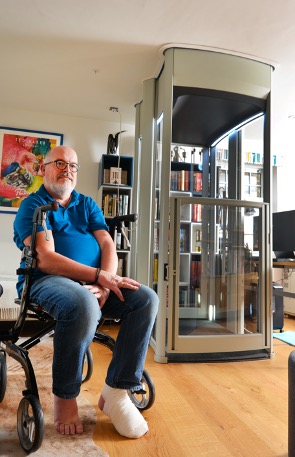
Typical Home Lift Applications
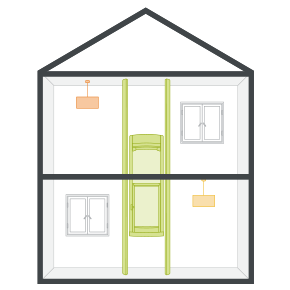
Standard
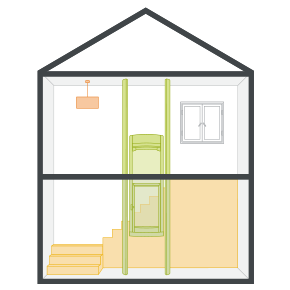
Stairwell Void/Landing
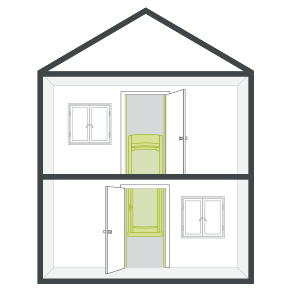
Cupboard to Cupboard
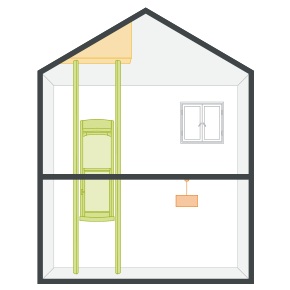
Sloping/vaulted ceilings
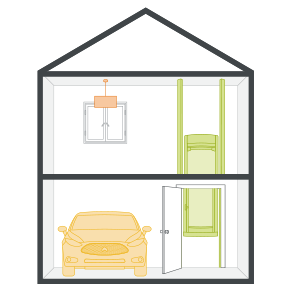
Garage
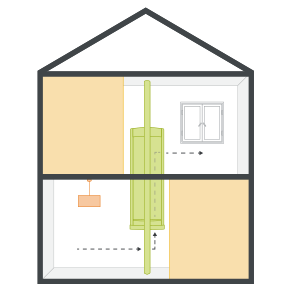
ThruCar
What the Experts Say…
The Professional’s Perspective

Architect and later-life design specialist Emma Luddington
of multi-award-winning Living Well at Home Ltd says:
“It is never too early for clients to start future-proofing a home, whether privately financed or supported by grant funding. It is one of the best investments a homeowner can make and will pay dividends in convenience, independence and peace of mind. Not to mention the cost savings of being able to stay in a much-loved home, rather than move into a care home earlier than necessary.
There is no need for unsightly adaptations; the principle is that future proofing should seamlessly blend with home decor and style, at a budget to suit. And, with so many attractive products and solutions – like the Home Lift range by Stiltz, it’s now possible to make homes age-friendly and provide peace of mind for the future.
Unfortunately, many households do not make these changes in good time, leading to unexpected life-changing loss of independence, expensive care costs and even having to leave the much-loved family home for a residential care setting.
With residential care costs increasing by 4.7% last year, and weekly fees well over £700 in all parts of the UK, investing a few hundred or even a few thousand pounds in an age-friendly home has to be money well spent.”

Further information for professionals:
Reputable adaptation companies, such as Stiltz Home Lifts, provide home assessments for equipment and work alongside healthcare professionals to ascertain individual requirements are met. Stiltz can provide professional quotations and technical specifications, as well as CAD designs for builders and architects.
For further advice, contact the Stiltz trade team on:
01384 880343 or email [email protected]
An assistive home product needs to be safe, user-friendly and offer longevity as well as being cost effective. Specialist accessibility websites such as Living Well at Home provide expert information on age friendly housing and home adaptation.
*Average weekly residential care home cost:
https://www.carehome.co.uk/advice/care-home-fees-and-costs-how-much-do-you-pay
